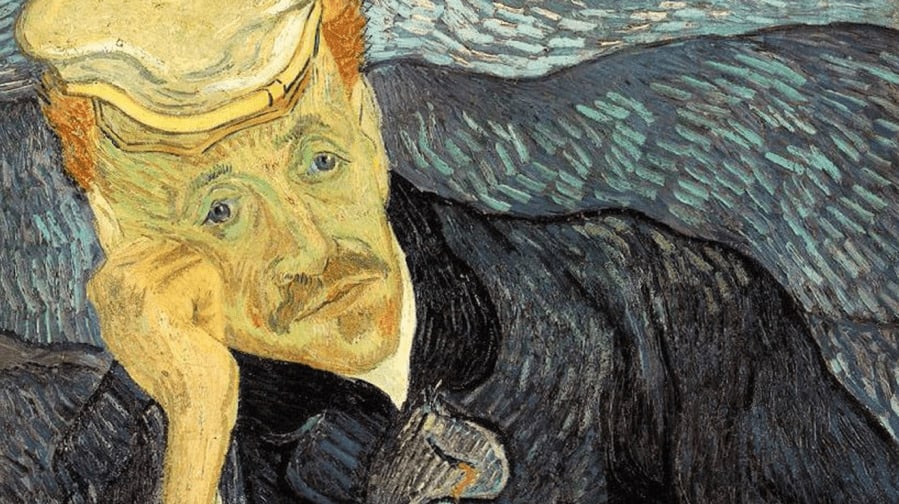The Asian Crisis of 1987 as Catalyst for Impressionist Collecting

With the current crisis wreaking havoc around the world, it is hard not to immerse ourselves in the pages of history to identify the hits and misses of the past to find guidance. Would it be possible that Dr. Gachet’s melancholy gaze could hide an answer to overcome the present difficulties? Amidst this hubbub of color and energy, the Doctor rests impassively in what seems a commentary on his mental health. However, behind this masterpiece, an art market’s triumph remains to be unveiled once again.
Originated in Thailand, the speculative capital flows from developed countries to the East Asian economies had triggered an era of optimism that resulted in an overextension of credit and too much debt accumulation in those economies. July 1997 saw the Thai government fix this exchange rate against the U.S. dollar, something it had maintained for too long, neglecting currency resources. This action triggered a wave of panic across Asian financial markets and quickly led to the widespread reversal of billions of dollars of foreign investment across Thailand, Indonesia, Malaysia, Singapore, Hong Kong, and South Korea. As the panic unfurled in the markets and investors grew wary of possible bankruptcies of East Asian governments, fears of a worldwide financial meltdown began to spread.[1] However, it was no coincidence that the art market experienced a considerable increment never seen before in this continent.
A parade of Impressionist and Post-Impressionist artworks become the safety net for several Asian investors. This unexpected rise of the demand skyrocketed the prices privately and at auctions. A crucial role was played by Japanese buyers, who were attracted to the market following the revaluation of the yen at the 1985 and the changes to U.S. tax law that removed all incentives of the wealthy to donate fine art to museums, instigating a spate of sales.[2]
The greatest spike in sales happened between 1987 and 1990, after the 1987 stock market crash. Vincent van Gogh, who had sold only one painting in his own lifetime, became the most sought-after artist in the world. Three of his pieces became, in turn, the most expensive paintings ever sold; the 1987 sale of Sunflowers to the Japanese fire-insurance company Yasuda brought $39.9 million, a price eclipsed later in the same year by the sale of Irises to Australian entrepreneur Alan Bond for $53.9 million and again in 1990, when Japanese businessman Ryoei Saito purchased Portrait of Dr. Gachet for $82.5 million. By contrast, one and a half year later, Le Jardin á Auvers, fetched only or 6.5 millions in Paris.[3]
A research published in 2011 by the Association of Cultural Economics showed a 95% increment of an index created specially for this marketplace. This new hedonic index was based on repeated sales during the 1980s, from drawings and paintings of three categories: (i) 3862 artworks from 13 Impressionist artists; (ii) 2563 sales from 39 Dutch, French and Italian Old Masters; and (iii) 2650 artworks by 9 Modern artists including Derain, Leger, Braque, Miro, Chagall, and Picasso.[4]
The years that followed this crisis become the pinnacle in deciding the future of some of the greatest works of art. The private hands of these investors and collectors who acted upon this once-in-a-lifetime opportunity will forever become object of jealousy. This is a historically favorable time for acquiring works of art, and while indices can skyrocket at any time, it is essential to understand the mechanics of the art market and collector behavior, both private and institutional, and the forces that sustain and displace markets, to avoid falling into high price traps due to abnormal circumstances or predictable taste swings. Therefore, it is ever more fundamental to regard and be spot on artistic merit and quality, above all categories and considerations.

[1] Bondarenko, Peter. ‘5 Of the World’s Most Devastating Financial Crises’. www.britannica.com/list/5-of-the-worlds-most-devastating-financial-crises.
[2] Howard, Jeremy R. “Art as Investment.” Encyclopædia Britannica, Encyclopædia Britannica, Inc., 10 Nov. 2017, www.britannica.com/topic/art-market/Art-as-investment.
[3] Bocart, Fabian & Bastiaensen, Ken & Cauwels, Peter. The 1980s Price Bubble on (Post) Impressionism. Association of Cultural Economics, November 2011. p. 2
[4] Ibid, p. 4
